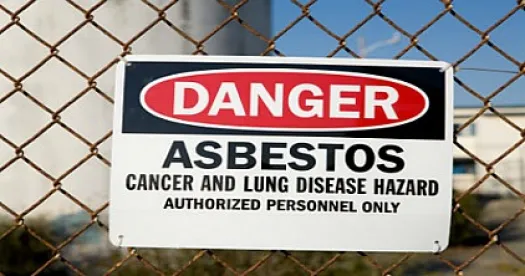Companies facing "take-home" asbestos or other toxic tort exposure claims in Arizona, or in other jurisdictions applying Arizona law, now have a new case to cite in dispositive motions. With the Sept. 20 Arizona Court of Appeals decision in Quiroz v. Alcoa, Inc., Arizona recently joined the list of states that have refused to allow claims for "take-home" asbestos exposures.
In the ruling, the Court of Appeals affirmed a trial court's ruling granting a defendant's Motion for Summary Judgment in a case in which plaintiffs alleged their decedent contracted mesothelioma as a result of exposure to asbestos via his father's work at defendant's factory. Plaintiffs claimed decedent's father brought asbestos dust home on his clothing after working with asbestos-containing products at defendant's factory and that this "take-home" exposure caused decedent's mesothelioma.
In a case of first impression in Arizona, the Court found that a premises owner owes no duty to the child of an employee in such "take-home" asbestos exposure cases.
In considering the issue, the Court distinguished Arizona law from other states, in that Arizona does not consider foreseeability of injury in determining whether a defendant owes a plaintiff a duty of care. The Court likewise declined to apply the Restatement (Second and Third) of Torts, Sections 371 and 54 respectively, finding that such application would "substantially change Arizona's long-standing conceptual approach to negligence law by effectively eliminating duty as one of the require elements of a negligence claim…" Id. at 5..
The Court also rejected Plaintiff's argument that finding no duty in "take-home" cases would violate public policy considerations. In doing so, the Court expressed concern over the potential for limitless liability for defendants, stating:
We share this concern because, as noted above, Appellants offer no way to limit the duty they seek either to employees' family members or to asbestos exposure. Absent these constraints, any company that made or used a potentially hazardous substance could be liable to anyone who ever came into contact with an employee who arguably could have carried said hazardous substance off-site. Such a dramatic expansion of liability would not be compatible with public policy. Id. at 13-14 (internal citations omitted).
While Quiroz addressed "take-home" exposure with respect to a premises owner and is silent as to claims against product manufacturers, the Court's reasoning finding no duty exists should arguably apply to both types of defendants.
Other state courts have likewise indicated, to varying degrees, that no duty to warn exists for "take-home" exposures. This majority trend includes decisions from Georgia, New York, Michigan, Texas, Maryland, Iowa, Ohio and Delaware. California appellate courts are split, though the California Supreme Court is expected to rule on the issue soon. An Illinois appellate court has ruled that an employer owed no duty to warn of "take-home" exposures before 1964, when the first study on the issue was published. See Holmes v. Pneumo Abex, et al., 55 N.E.2d 1173 (Ill.App. 4th 2011).





 />i
/>i
